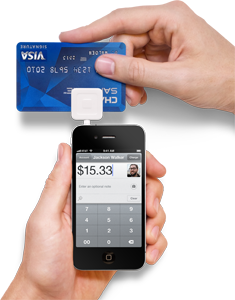Here’s what caught my attention in the payment space this week.
More Androids banking
 As the number of Android users swells past the number of iPhone users, it should come as no surprise that as of December, 2010, there’s more mobile banking on Android than on iPhones. However, Carlo Cardilli suggests that could change as the number of Verizon iPhones grows and those users take up mobile banking.
As the number of Android users swells past the number of iPhone users, it should come as no surprise that as of December, 2010, there’s more mobile banking on Android than on iPhones. However, Carlo Cardilli suggests that could change as the number of Verizon iPhones grows and those users take up mobile banking.
A recent Forrester survey says 12% of the US online population banks on their phones, up from 5% two years ago. Forrester says that’s about 10 million users, and predicts that will grow to 50 million by 2015. That growth seems reasonable, given that users who discover mobile banking tend to, over time, use it more as they get used to it, especially for simple transactions like checking balances and transferring funds between accounts. Still, Penny Crosman with Bank Systems & Technology notes that 35% of online users shy away from mobile banking because they worry it’s not safe and 24% don’t see the point and would just as soon wait until they reach the ATM.
Discomfort with the mobile wallet
Speaking of people who are wary of mobile transactions, remember all that stuff we’ve been reading about mobile payments being a disruptive technology that catapults new players into the driver’s seat and leaves old-school players in the dust? Well, turns out not everyone is all that excited about handing over the keys to the kids. What’s more, they’re not even sure they want to get in the car with them. A new survey by UK researchers Vision Critical finds a majority of Britons “uncomfortable” with the idea of using their phones for mobile payments. The survey found women more skeptical, while men and people already poking around on smart phones were more open to the mobile wallet concept.
Perhaps most significantly (and interesting) was that those surveyed trusted banks more than telecom carriers, credit card issuers, or handset manufacturers to handle the transactions. “Banks could play a strong role here,” said Mike Stevens, Vision Critical’s head of research in London, in an interview with Sarah Clark at Near Field Communications World. “They are generally more trusted by their customers than other players in the mobile payments game.” It’s a striking vote of confidence for the banks whose credibility had seemed to suffer in the wake of the financial crisis, and perhaps an affirmation that however much we dislike our banks, we like our telcos even less.
Square simplifies
 Square founder Jack Dorsey tweeted the news Tuesday that the mobile payment service would drop its transaction fee (15 cents) on purchases and collect only the 2.75 cut. @Jack followed that with a retweet from @stevecheney: “A merchant doing 500 transactions a day just saved over $27K a year with @square. Remarkably impressive.”
Square founder Jack Dorsey tweeted the news Tuesday that the mobile payment service would drop its transaction fee (15 cents) on purchases and collect only the 2.75 cut. @Jack followed that with a retweet from @stevecheney: “A merchant doing 500 transactions a day just saved over $27K a year with @square. Remarkably impressive.”
Kat Aharya at Mobiledia wrapped some nice context around the move, noting that it fits nicely with Square’s goal of simplifying the whole process of collecting payments on credit cards, especially for small merchants. From the cute dongle that plugs in to a smartphone’s audio jack to the straight 2.75% cut (compared to merchant vendor accounts, which have variable rates depending on transaction amounts and volume), the Square sells itself as the simple and straightforward alternative for the forward-looking merchant crowd.
Few remembered that the fee was an experiment, but Kevin Woodward at ISO & Agent offered a reminded that Square had added the fee just last April and was now reverting to its earlier payment structure. I guess that explains how Square already had a smooth promotional video ready to roll.
Got news?
News tips and suggestions are always welcome, so please send them along.
If you’re interested in learning more about the payment development space, check out PayPal X DevZone, a collaboration between O’Reilly and PayPal.
Related:
